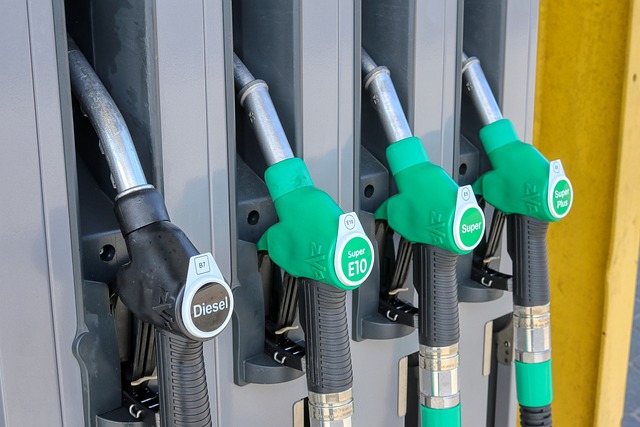Power Generators for Australian Homes and Businesses
Power generators have become essential equipment for Australian households and businesses seeking reliable backup electricity during outages and emergencies. These devices convert fuel into electrical energy, providing independence from the main power grid when needed most. With Australia's diverse climate conditions and increasing demand for uninterrupted power supply, understanding the different types of generators available can help you make informed decisions about protecting your property and maintaining essential services during power disruptions.

What Are Standby Generators for Home Use?
Standby generators for home use are permanently installed backup power systems that automatically activate when the main electrical supply fails. These units connect directly to your home’s electrical panel and natural gas line or propane tank, eliminating the need for manual startup during emergencies. Standby generators typically range from 7kW to 22kW for residential applications, providing enough power to run essential appliances like refrigerators, heating systems, lighting, and security equipment.
The automatic transfer switch is a crucial component that monitors your home’s power supply continuously. When it detects an outage, the system starts the generator within seconds and switches your home’s electrical load from the utility supply to the generator. Once utility power returns, the transfer switch automatically returns your home to grid power and shuts down the generator after a brief cooling period.
How Do Electricity Generators for Home Work?
Electricity generators for home convert mechanical energy into electrical energy through electromagnetic induction. Most residential generators use internal combustion engines powered by petrol, diesel, natural gas, or propane. The engine drives an alternator that produces alternating current electricity, similar to what utility companies provide to your home.
Portable generators offer flexibility for temporary power needs during camping trips, outdoor events, or emergency situations. These units typically produce between 1kW to 10kW of power and require manual startup and fuel refilling. While less convenient than standby units, portable generators provide cost-effective backup power for essential devices and can be stored when not needed.
Inverter generators represent advanced technology that produces clean, stable electricity suitable for sensitive electronics like computers and medical equipment. These units adjust engine speed based on power demand, resulting in improved fuel efficiency and reduced noise levels compared to conventional generators.
Generator with Battery Storage Systems
Generator with battery storage combines traditional fuel-powered generation with modern battery technology to create hybrid power systems. These innovative solutions store excess generator power in batteries, allowing for silent operation during quiet hours and extended runtime without continuous fuel consumption. Battery storage systems can power essential circuits for several hours using stored energy before the generator needs to restart.
Solar generator systems with battery storage offer environmentally friendly alternatives that harness renewable energy. These units combine solar panels, charge controllers, and lithium batteries to provide clean power without fuel requirements or emissions. While weather-dependent, solar generators with sufficient battery capacity can support basic electrical needs for extended periods.
The integration of battery storage with traditional generators creates more efficient and versatile power solutions. Smart controllers manage power distribution between the generator, batteries, and electrical loads, optimising fuel consumption and reducing wear on generator components through reduced operating hours.
Comparing Generator Options in Australia
| Generator Type | Power Output | Fuel Type | Installation | Price Range (AUD) |
|---|---|---|---|---|
| Portable Petrol | 1-8kW | Petrol | None Required | $300-$2,500 |
| Standby Natural Gas | 8-22kW | Natural Gas/LPG | Professional | $4,000-$12,000 |
| Solar with Battery | 1-5kW | Solar/Battery | DIY/Professional | $2,000-$8,000 |
| Diesel Standby | 10-30kW | Diesel | Professional | $5,000-$15,000 |
Prices, rates, or cost estimates mentioned in this article are based on the latest available information but may change over time. Independent research is advised before making financial decisions.
Choosing the Right Generator Size
Determining the appropriate generator size requires calculating your essential power needs during outages. Start by listing critical appliances and their wattage requirements, including refrigerators, heating systems, lighting, and communication devices. Remember that some appliances require additional starting watts, particularly those with electric motors.
A 10kW generator typically provides sufficient power for essential circuits in average Australian homes, while larger properties or those requiring whole-house backup may need 15kW to 22kW units. Consider future electrical needs and potential home expansions when sizing your generator system.
Professional electricians can perform load calculations and recommend appropriate generator sizes based on your specific requirements. They can also ensure proper installation, compliance with Australian electrical standards, and appropriate permits for permanent installations.
Maintenance and Safety Considerations
Regular maintenance ensures reliable generator operation when you need it most. Schedule monthly test runs to keep internal components lubricated and identify potential issues before emergencies occur. Change engine oil according to manufacturer specifications, typically after 50-100 hours of operation or annually for standby units.
Fuel system maintenance includes using fuel stabilisers for stored petrol and replacing fuel filters as recommended. Natural gas and propane systems require less maintenance but benefit from annual professional inspections to ensure safe operation and optimal performance.
Never operate generators indoors or in enclosed spaces due to deadly carbon monoxide risks. Maintain adequate ventilation around outdoor units and install carbon monoxide detectors in your home for additional safety. Ensure generators remain dry and protected from weather while maintaining proper clearances for cooling airflow.
Power generators provide valuable insurance against electrical outages, offering peace of mind and continued comfort during emergencies. Whether choosing portable units for occasional use or investing in permanent standby systems, proper selection, installation, and maintenance ensure reliable backup power when you need it most. Consider your specific power requirements, budget, and local regulations when evaluating generator options for your Australian home or business.




